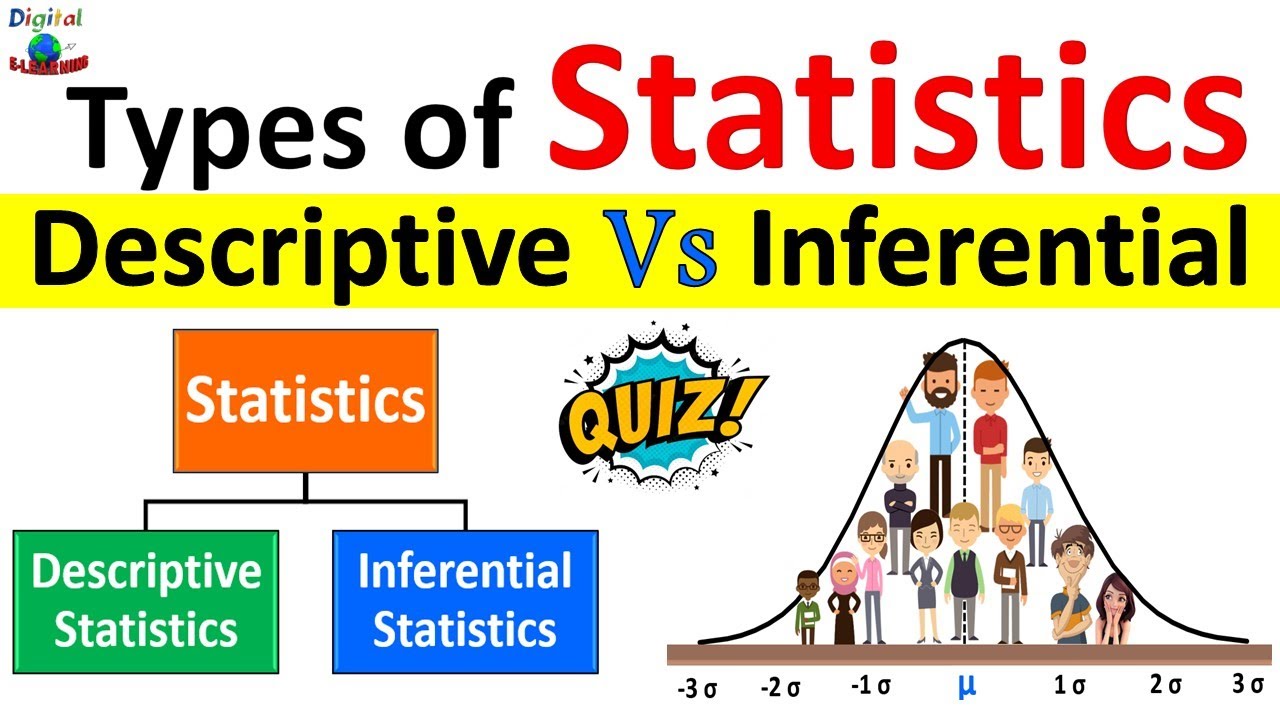Statistics: 01 Organizing and Visaulizing Data
Summary
TLDRThe video provides an insightful overview of statistics, focusing on data organization and visualization techniques. It begins by explaining frequency tables and their transformation into relative frequency tables that represent probabilities. The presentation emphasizes the importance of grouping data for analysis, demonstrated through examples of healthcare assessments. Various visualization methods are explored, including bar graphs and histograms for discrete and continuous data, respectively. The video also introduces stem-and-leaf plots for detailed data representation and highlights the utility of back-to-back stem-and-leaf plots for comparative analysis. Overall, it equips viewers with essential tools for effectively interpreting statistical data.
Takeaways
- 😀 Statistics involves the collection, analysis, interpretation, and organization of data.
- 📊 Data can be quantitative or qualitative, with legislative data specifically being numerical.
- 📝 A frequency table organizes data by counting occurrences, helping to simplify raw data analysis.
- 🔢 The probabilities of outcomes in a relative frequency table sum to 1, representing all possible outcomes.
- 📈 Grouping data into intervals is useful when there are too many distinct outcomes to analyze individually.
- 🌟 A bar graph visually represents frequencies from a frequency table, making data more accessible.
- 📉 A histogram is similar to a bar graph but is used for continuous data, with no space between bars.
- 🌿 A stem-and-leaf plot displays data using two parts: stems (left digits) and leaves (right digits).
- 🔗 A back-to-back stem-and-leaf plot allows for a comparative view of two datasets side by side.
- 🔍 Various methods exist for organizing and displaying data, including frequency tables, relative frequency tables, histograms, and stem-and-leaf plots.
Q & A
What is the definition of statistics?
-Statistics is the study of collecting, analyzing, interpreting, and organizing data, which can be quantitative (numerical) or qualitative (categorical).
What is a frequency table?
-A frequency table organizes discrete data by counting the number of occurrences for each possible outcome, providing a clear view of the data distribution.
How are probabilities calculated from a frequency table?
-Probabilities are calculated by dividing the frequency of each outcome by the total number of observations. The sum of these probabilities should equal 1.
What is the difference between a frequency table and a relative frequency table?
-A frequency table displays counts of occurrences, while a relative frequency table presents the probabilities of each outcome, often as fractions or percentages.
Why is data sometimes grouped into intervals?
-Data is grouped into intervals to simplify analysis and make it easier to interpret larger sets of data, especially when there are many distinct values.
What is a bar graph and how does it differ from a histogram?
-A bar graph represents discrete data with separate bars for each category, while a histogram displays continuous data with bars that touch each other, indicating the data's intervals.
What is a stem-and-leaf plot?
-A stem-and-leaf plot is a method of displaying quantitative data where each number is divided into a 'stem' (the leading digit(s)) and a 'leaf' (the trailing digit), allowing for quick visualization of data distribution.
How can a back-to-back stem-and-leaf plot be useful?
-A back-to-back stem-and-leaf plot allows for comparison between two related sets of data side by side, making it easier to identify differences and similarities.
What is the significance of understanding discrete and continuous data?
-Understanding the difference between discrete and continuous data is crucial for selecting appropriate statistical methods and visualizations, as they have different properties and implications for analysis.
Can you give an example of how to create a relative frequency table?
-To create a relative frequency table, first construct a frequency table. Then, divide each frequency by the total number of observations, and express the results as fractions or percentages.
Outlines

هذا القسم متوفر فقط للمشتركين. يرجى الترقية للوصول إلى هذه الميزة.
قم بالترقية الآنMindmap

هذا القسم متوفر فقط للمشتركين. يرجى الترقية للوصول إلى هذه الميزة.
قم بالترقية الآنKeywords

هذا القسم متوفر فقط للمشتركين. يرجى الترقية للوصول إلى هذه الميزة.
قم بالترقية الآنHighlights

هذا القسم متوفر فقط للمشتركين. يرجى الترقية للوصول إلى هذه الميزة.
قم بالترقية الآنTranscripts

هذا القسم متوفر فقط للمشتركين. يرجى الترقية للوصول إلى هذه الميزة.
قم بالترقية الآنتصفح المزيد من مقاطع الفيديو ذات الصلة

Statistika 06 | Visualisasi Data dalam Statistika | Data Visualization | Belajar Statistika

PERBEDAAN STATISTIK DESKRIPTIF DAN INFERENSIAL

Descriptive Statistics vs Inferential Statistics | Measure of Central Tendency | Types of Statistics

Statistics Course Overview | Best Statistics Course | MarinStatsLectures

Pengantar Sains Data 01 - Pendahuluan Sains Data & Big Data

CH01_VID04_DBMS Architecture , Data Models
5.0 / 5 (0 votes)
